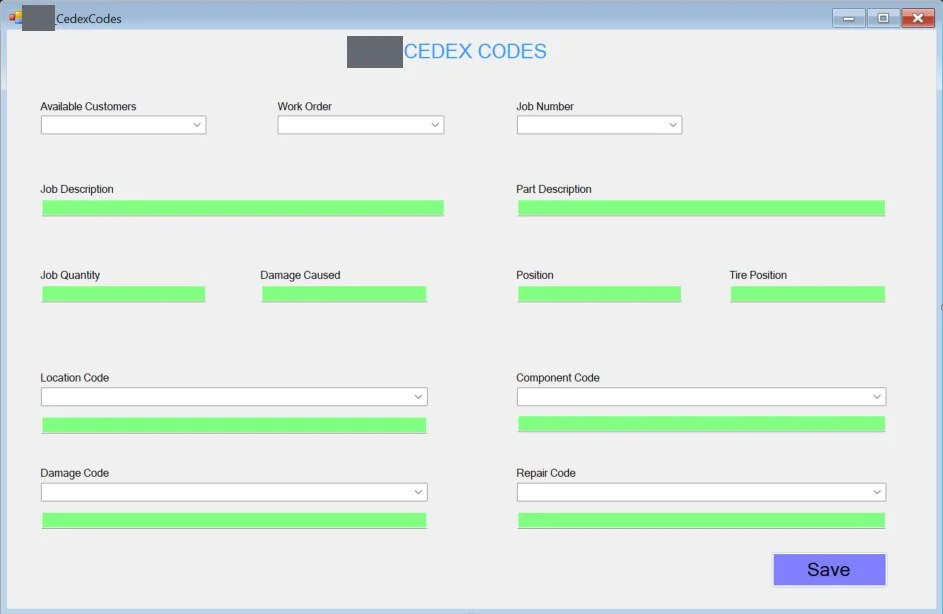MNR CEDEX Codes Page
Container equipment data exchange (CEDEX) codes are standardized codes used to track and manage the maintenance, repair, and state of shipping containers as they travel between terminals. The MNR CEDEX codes page is a section of the Automation Billing Systems (ABS) program that was appended a couple months after the initial launch. I worked on this with my senior developer to build and map the SQL tables, write stored procedures, develop the product, and design the UI.
Requirements Gathering and Backend Development
Our clients had multiple customers to which they were sending MNR invoices, and each customer had a different set of requirements. This specific development was done for one customer who had rigid requirements for the EDI and limitations on what our client could bill. Throughout the course of development, we met with this customer on a regular basis to gather requirements, and test the success of the EDI messages once received on their end.
Some requirements that varied for this customer included string length accepted for tariffs, number of parts allowed for each repair, and specific jobs that could or could not be bundled on each invoice.
My team and I worked diligently to straighten out these conditions, and ensure that our code would automatically handle these for the user.
CEDEX Program Ver 1.0
User Problems: The finance department had multiple years worth of outstanding rejected MNR work orders and invoices to bill their customers, but they were unable to find a way to quickly fill out the CEDEX (container equipment data exchange) codes required to send the invoices. Their old process was to look at a pamphlet that mapped certain CEDEX codes to specific job types, and manually update each invoice line per work order in excel. This often resulted in human error and rejected invoices.
User Goals: To speed up the process of applying CEDEX codes to each invoice, and improve accuracy.
Objectives: Develop a software program that would streamline the process of updating CEDEX code on the work orders by pointing to a SQL database with the mapped CEDEX data.
The application my team created allowed the billing department to use a simple UI to select maintenance codes from a drop down list that was automatically defined based on the invoice requirements. Based on user selection, the database would be updated for each invoice. Once the codes were applied, the user could then use their ABS program to pull the invoice data into an excel format.
CEDEX Program Ver 2.0
After successfully adopting the first build of the CEDEX program, our users came back to us with new requirements for customization. After discussing further, we started working on the CEDEX program 2.0.
User Problems: In order to run the invoices, they had to use the old ABS program created by our team which required more navigating and training.
User Goals: Complete all the steps of the invoicing process for this customer - from CEDEX updates to file downloads - through one interface.
Objectives: Update the CEDEX program to allow users to further manage work orders, generate EDI invoices for each location, and generate fusion files for their AP system.

